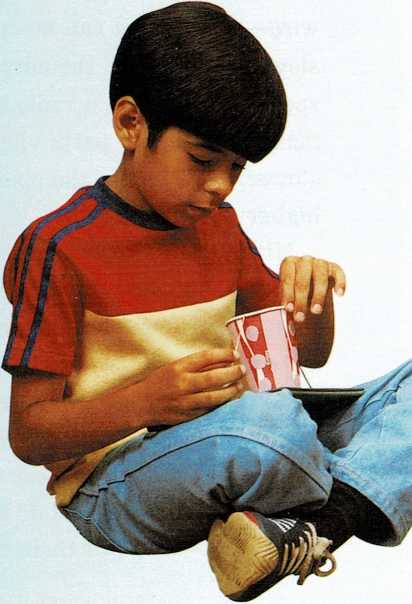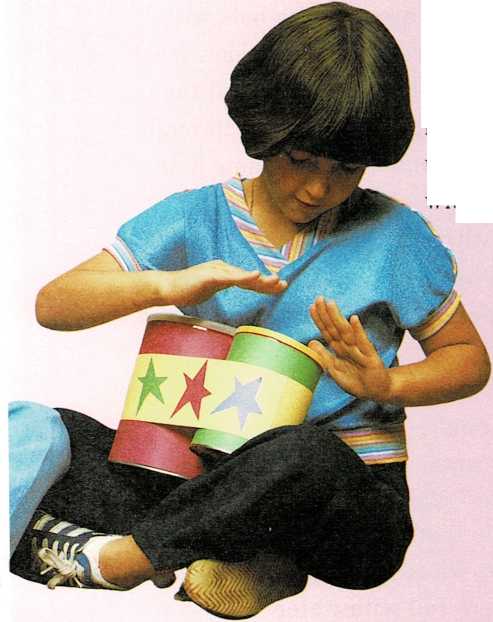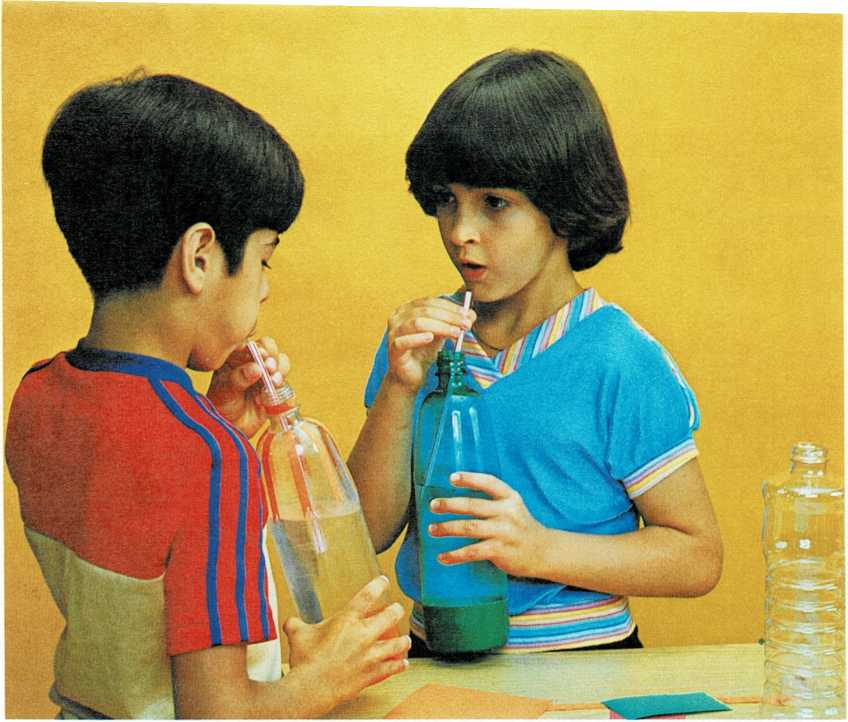Make your own music
Tap, plink, tweet, and tootle. Here are four simple instruments you
and your friends can make. Each instrument belongs to a big family—it
has lots of \”relatives” that make music in the same way.
Rubber-band Strummer
The \”string” in this stringed instrument is a rubber band. You strum
different parts of it to make different sounds.
Materials
• book
• paper cup
• rubber band
Place the paper cup on the book, with the open end up. Stretch the
rubber band the long way around the book and over the cup.

Slide the cup close to one end of the book. Strum the part of the rubber
band that goes across the open cup. Then strum the stretched part on
each side of the cup. Do you hear three different sounds?
To \”tune” your Strummer, keep moving the cup as you strum the rubber
band. The shorter and tighter you make one part of the rubber band, the
higher the sound will be. Keep trying until you hear three notes that
sound good together. Then use your Strummer to play a three-note tune.
+———————+————————————————+
| Materials | Tin-can bongos |
+———————+————————————————+
| • coffee cans (1 | Bongo drums are percussion instruments that |
| large, | come in sets of two. Each drum makes a |
| | different tone when you tap it. |
| 1 small) | |
| | Snap the lids onto the cans. Make sure both |
| • plastic lids for | lids fit tightly. Turn the cans upside down |
| cans | and stand them on a tabletop or other flat |
| | surface. |
| • masking tape | |
+———————+————————————————+
Have a friend hold the cans while you wind two or three layers of tape
around them to hold them together. Then turn the cans right side up.
Your bongo drums are ready to play.
One drum is shorter than the other—so, of course, your bongos won’t
stand up. You sit on a chair or stool and hold them between

your knees to play them.
Tap each drum with your fingertips. The smaller drum vibrates faster and
gives out a higher sound than the larger one. You can use both hands to
tap out a catchy rhythm with high and low sounds.
Materials
• drinking straw (paper)
• needle
• ruler
• scissors

Materials
bottle (plastic)
drinking straw
water
Soda-straw clarinet
This little instrument works very much like a real woodwind. The \”reed”
is one end of the straw.
Pinch one end of a soda straw to flatten it. The pinched part should be
about as wide as your thumb. Trim the corners of the pinched part, as
shown.
Put the pinched end of the straw into your mouth. Close your lips around
the straw and blow hard. With a little practice, you should hear a low,
loud sound, like the sound of a horn.
Now use the needle to punch five holes in the straw. The holes should be
about an inch (2.5 cm) apart. Cut around each hole with small, sharp
scissors to make it wider. Hold the straw in both hands and cover all
the holes with your fingers. Now blow through the straw. You should hear
the same note you heard before.
Beginning with the bottom hole, uncover the holes one by one. Each hole
you uncover will make your clarinet play a higher sound.
Bottle trombone
A bottle of water is the slide that makes this \”trombone” play higher
and lower.
Find a bottle that is almost as long as the straw you use. Rinse the
bottle clean and fill it three-quarters full with water.

Stick the straw into the water. Holding the straw in one hand and the
bottle in the other, blow a thin stream of air across the top of the
straw. You should hear a soft, whistling sound made by the vibrating air
in the straw.
Now move the bottle up and down as you blow through the straw. When most
of the straw is in the water, only a short part of the tube is filled
with vibrating air. Blowing the \”trombone” makes a high sound. When
most of the straw is out of water, the air-filled part of the tube is
longer and you get a lower sound.
With a little practice, you can learn to move the bottle up and down to
play a tune.

